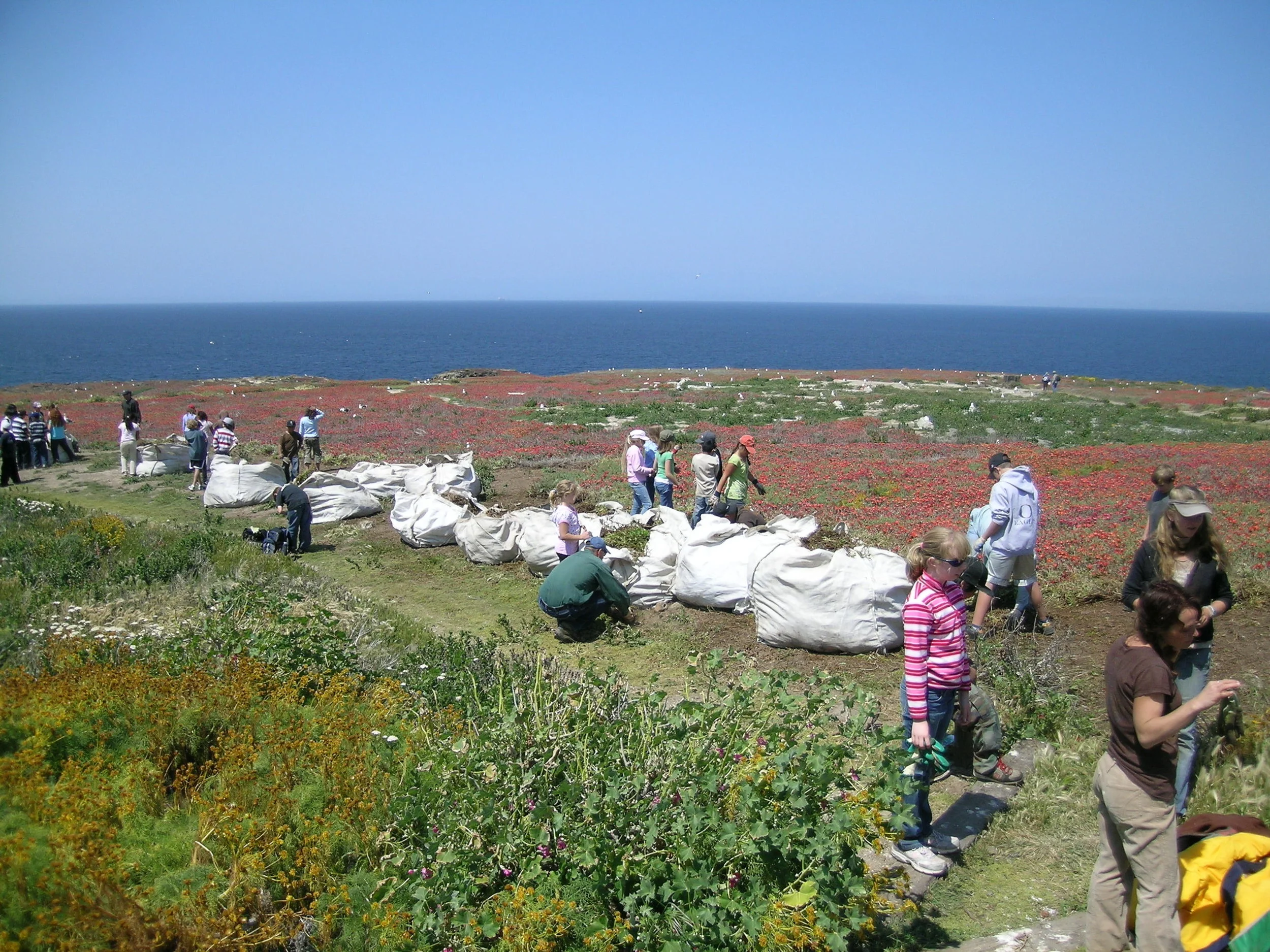School Trips to Anacapa Island
One of the largest threats to the island has been the dominance of non-native ice plant. Since the era when the Coast Guard ran the lighthouse, most of the island had been covered by ice plant, pushing available seabird nesting habitat to the fringes of the island. In 2012, the park superintendent set a goal to eradicate all of the red-flowered ice plant by the National Park Service’s centennial in 2016.
Channel Islands Restoration has been a key player in ice plant eradication since the goal was set in 2012, and with the help of hundreds of volunteers, we’ve made a huge impact. Today, the vast majority of the red-flowered iceplant has be removed, but there’s still work to do and CIR and its many volunteers are stepping up.
We have worked to fill the bare open space with native plants such as gum plant, marsh Frankenia, giant Coreopsis and many others. Unsurprisingly, seabirds have already shown a strong preference for native habitat and the island seems to be alive with life. Our work on Anacapa Island has been a major conduit to advance our mission to educate grade schoolers about our natural world and the importance of native habitat. One such recent chapter in this ongoing story was our work with Pacific High School in Ventura.
After multiple delays due to weather and stormy seas, Pacific High School was finally able to make it out to East Anacapa Island with Channel Islands Restoration staff and the NPS Interpretive Staff. The trip was one of the most extraordinary trips to Anacapa that we’ve ever been on, and we expect that it will leave a lasting impression on everyone involved.
Upon cresting the 154 (±3 depending on who you ask) steps to get onto Anacapa Island, our arrival was greeted by hundreds if not thousands of western gulls in flight overhead, and a certain few of the group were exceedingly happy to have worn a hat that day.
After a brief introduction over lunch, we let the high schoolers loose on the ice plant, and with all of the enthusiasm that any high schooler can muster, they leapt at it. Now that’s not to say that they weren’t effective. Quite the contrary, really. It’s hard to estimate just how much ice plant was pulled. However, for reference, at the end of the day, it took two people about 15 minutes of shoveling iceplant out of the back of a truck bed to discard it all in the solarization mound. It was a lot.
At the end of the work day, most of the students wanted to go for a hike out to inspiration point, and the others were forced to do the hike anyway (which they later appreciated of course). We hiked past restoration sites from years’ past to find new Coreopsis growing up beneath the blanket dead iceplant spurred on by the recent rain. With the recent rain having cleared out the air, the views of the mainland were spectacular and storm clouds on the southern horizon gave an awe-inspiring sense of depth and scale. The day was capped off with some whale watching - a pod of 10 grey whales heading west into the sunset, their tail flukes seeming to wave us off with their thanks.


